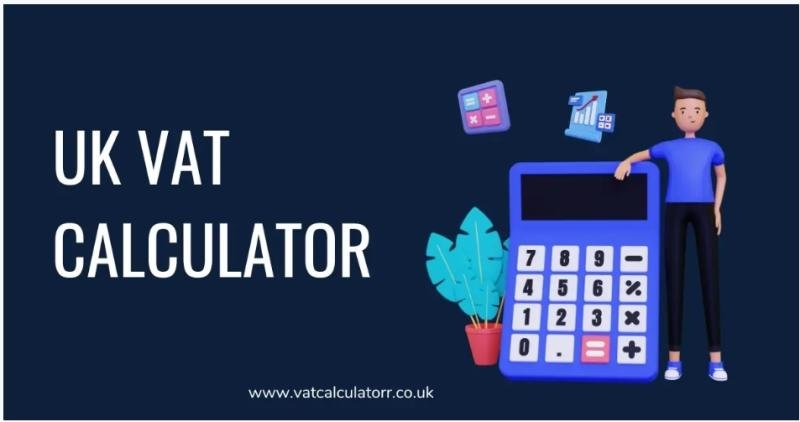If you’ve ever had to work backwards from a total amount to figure out how much VAT was included, you’ve already come across the concept of reverse VAT – whether you knew it or not. It’s a handy method for calculating the net price and VAT amount when all you have is the final total. This process is essential for business owners, freelancers, and anyone trying to stay financially accurate.
The quickest way to handle this type of calculation is with a https://vatcalculatorr.co.uk/. It takes the guesswork out of working backwards from gross figures and gives you precise VAT breakdowns with just a few inputs.
In this guide, we’ll explain what reverse VAT is, when you might need to use it, and how a calculator can make the whole thing a lot easier and more reliable.
What Is Reverse VAT?
“Reverse VAT” doesn’t mean the tax is paid backwards. It simply refers to calculating the VAT element within a total price – rather than adding VAT to a base price.
In other words, if you already have the total amount paid (including VAT), reverse VAT helps you figure out:
What the original price (before VAT) was
How much of the total was VAT
This is particularly useful in situations where:
You receive a total price from a supplier or contractor
You need to break down VAT for a receipt or invoice
You’re reviewing past transactions and need accurate records
You want to reclaim VAT or need to file a return
Common Reverse VAT Scenarios
Reverse VAT calculations are used more often than many people realise. Here are a few situations where it’s essential:
1. Checking Supplier Invoices
Let’s say you paid £120 for a service, and the invoice doesn’t show how much was VAT. If the applicable rate is 20%, you need to reverse calculate to find the VAT amount and net cost for your records.
2. Filing VAT Returns
Businesses must break down their input and output VAT when submitting returns. If some of your records only show total payments, you’ll need to reverse engineer the VAT.
3. Expense Reimbursements
Some companies need to reimburse employees the net cost, excluding VAT. If the employee submits a gross receipt, you’ll need to split the VAT out.
4. Project Costing & Forecasting
When budgeting for a project that includes VAT, breaking down the VAT amount helps to understand real costs and profit margins.
The Manual Method (And Why It’s a Hassle)
Here’s how you’d do it manually:
Formula:
Net Price = Gross Price ÷ (1 + VAT Rate)
VAT Amount = Gross Price – Net Price
Example:
If the gross price is £120 and the VAT rate is 20%:
Net Price = £120 ÷ 1.20 = £100
VAT Amount = £120 – £100 = £20
It’s straightforward when you only have one or two items, but if you’re working through a stack of invoices or receipts, this becomes time-consuming – and prone to error.
Why Use a Reverse VAT Calculator?
A dedicated reverse VAT calculator is designed to simplify this exact task. Instead of typing formulas into a spreadsheet or double-checking numbers with a calculator, you can just input the gross price and select the VAT rate – the tool handles the rest.
Benefits:
Fast & Easy: Enter one number, choose the rate, and you’re done.
Reduces Mistakes: No miskeyed formulas or rounding errors.
Supports Multiple Rates: Easily switch between 20%, 5%, or 0%.
No Setup Required: Many online tools are free and instant to use.
Helpful for Recordkeeping: Keeps things clean when preparing financial documents.
Features to Look For in a Good Reverse VAT Calculator
If you’re using a tool regularly, it’s worth picking one that’s built well. Here’s what to look for:
Simple layout: No clutter – just one field to enter your amount, and maybe a dropdown for VAT rate.
Flexible rate options: While 20% is most common, make sure it can handle other rates.
Mobile-friendly: You may need it while out and about.
Instant results: No delays or page reloads.
Free and accessible: You shouldn’t need to sign up or install anything.
Example Use Case: Freelance Consultant
Imagine you’re a freelance graphic designer. A client pays you £600 for a project, but you forgot to itemise VAT. You need to separate it for your accounting records.
Using a reverse VAT calculator:
Input: £600
VAT rate: 20%
Result:
Net: £500
VAT: £100
You can now enter this into your bookkeeping system correctly, showing that you collected £100 in VAT and earned £500 in fees.
Can Reverse VAT Apply to Reduced or Zero Rates?
Absolutely. If you deal with goods or services that qualify for 5% or 0% VAT, a reverse VAT calculator should still support that. You’d simply choose the appropriate rate and the tool will handle the calculations.
This is particularly important if you:
Sell children’s products
Provide home energy services
Deal in books or food
Offer goods to overseas customers
These might fall under reduced or zero rates depending on their category.
Summary: When to Use Reverse VAT Calculators
Use one whenever:
You have a gross total and need to find the net and VAT amounts
You’re working on a VAT return
You need to reclaim or report VAT properly
You want to double-check figures on supplier invoices
You’re setting prices and want to understand your true income
Final Thoughts
Reverse VAT calculations are something most businesses and freelancers will need to do at some point – whether it’s during tax season, while checking invoices, or when breaking down payments for internal records.
Rather than calculating everything by hand, using a reverse vat calculator simplifies the process, improves accuracy, and saves valuable time. It’s one of those tools that pays for itself – even when it’s free.
P.O Bagarji Town Bagarji Village Ghumra Thesil New Sukkur District Sukkur Province Sindh Pakistan 65200.
Wiki Blogs News always keeps careful online users to provide purposeful information and to keep belief to provide solution based information.
This release was published on openPR.


















